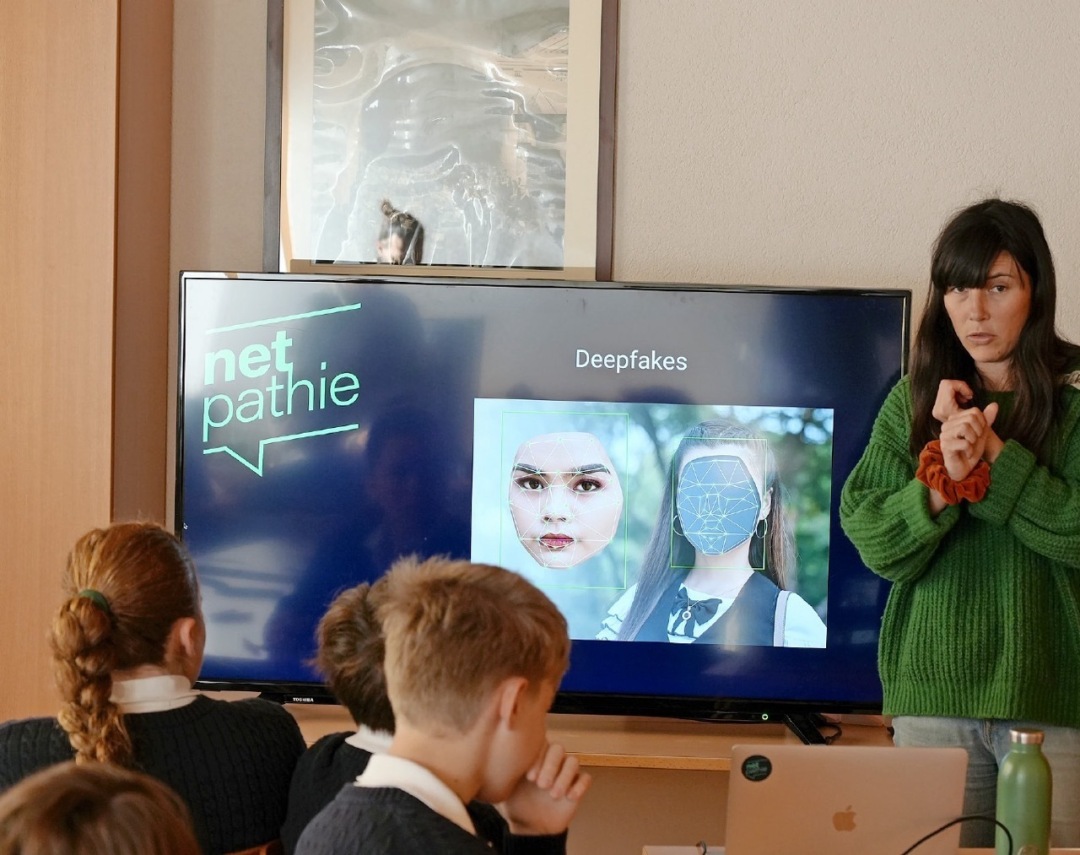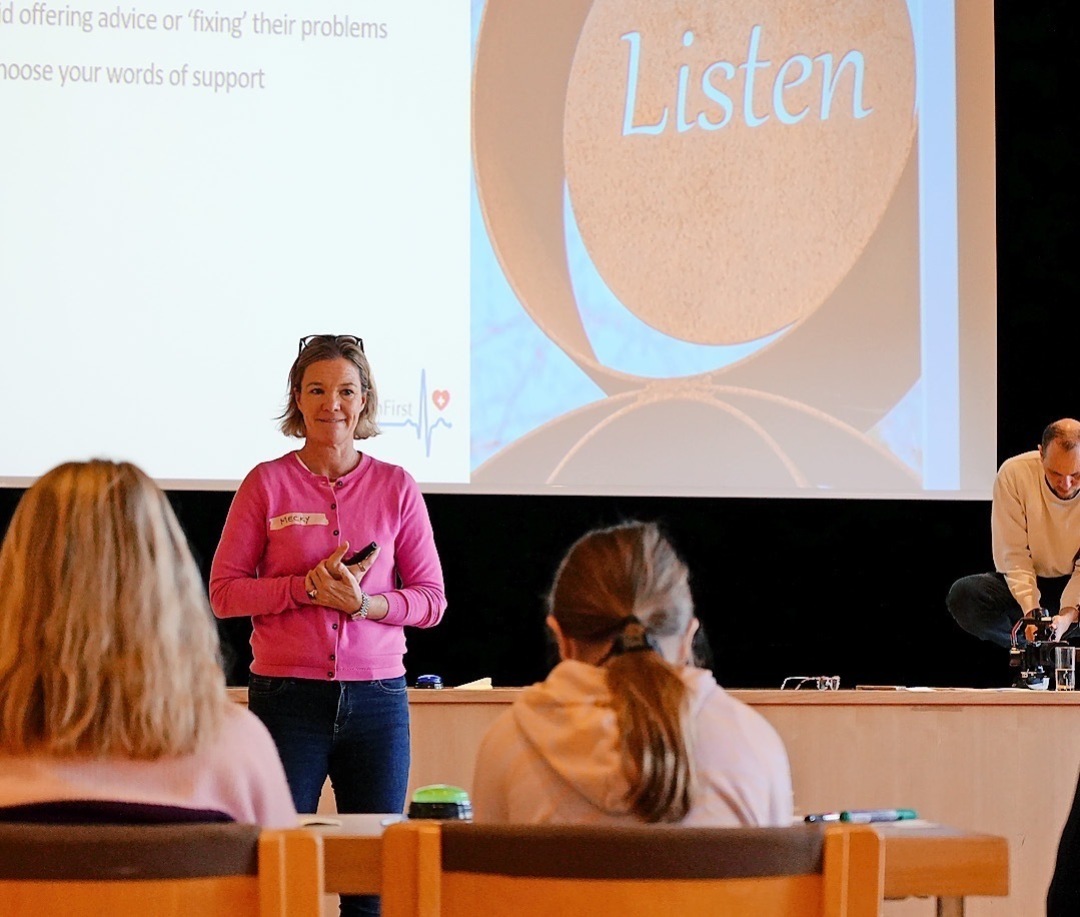Teaching teens to outsmart the internet
15.11.2025 NewsUpdate, Artificial Intelligence , Editors Picks, Education, John F Kennedy International School (JFK)From fake Elon Musk videos to “Mister Chat” answering homework prompts—students at this year’s Young Impact Day dove into the fast-shifting world of AI, deepfakes and digital wellbeing. Impact Gstaad’s workshops encouraged local teens to question what they see online, understand how AI tools think, and build the resilience they need both online and offline.
Navigating the digital world with awareness
If Michael Jackson were to order Chicken Nuggets while moonwalking in 2025, we would almost certainly be watching a deepfake—an AI-generated video. Often these manipulations are harmless or humorous, but not always. When a clip appears in which Elon Musk allegedly says something outrageous, how can we know whether it is real?
These were the kinds of questions students explored at Young Impact Day. The sustainability initiative Impact Gstaad organised a series of workshops addressing digital mindfulness, technical literacy and mental health.
Digital Mindfulness: Learning to navigate with intention
Last Friday, Impact Gstaad invited specialists in artificial intelligence and psychology to lead workshops under the theme “Mindful Engagement with Digitalisation”. Students learned how to navigate the online world more consciously.
Was that really Elon Musk, or was it a fake? One student quickly spotted something off: “His lips moved strangely!” she said, concluding that the footage must have been manipulated.
Held at the Kirchgemeindehaus Gstaad, the workshops brought together pupils from the John F. Kennedy School and the school in Gsteig. They learned to question online content, recognise manipulations, and practice mindfulness both online and offline.
“What was especially wonderful,” said Chantal Reichenbach, project leader of Young Impact, “was seeing students from different schools exchange ideas and discuss together. This kind of connection is what makes Young Impact unique.”
Room 1: Artificial Intelligence – What does ‘Intelligent’ actually mean?
Vanessa Geiss from Netpathie, a non-profit promoting media literacy and digital health, opened her session with a simple but far-reaching question: What is intelligence?
The answers varied widely. One student compared himself to a classmate (“I’m about as intelligent as Albert”), while others referred to their smartphones as intelligent. It quickly became clear that many students also attribute intelligence to machines.
Geiss, who studies Applied Computational Life Science at the ZHAW and works with AI systems, explained that algorithms can recognise patterns and make confident decisions on their own. The group was especially fascinated by ChatGPT, one student even referred to it as “Mister Chat”.
She explained that ChatGPT runs on large language models that generate text word by word, based on probability and training data.
To demonstrate, the students wrote the sentence starter “I am proud of myself when …” and asked ChatGPT and the AI tool Perplexity to complete it. The responses differed significantly. “The AI writes much longer answers than I do,” a student noted. “But those aren’t my thoughts, I don’t like that.”
Room 2: When images lie – how to spot a deepfake
In the second workshop, the focus was on deceptive images, videos and audio recordings. “Deepfakes try to artificially replicate reality,” explained Petra Marty of Netpathie. She noted that only a few hundred images of a person are enough today to create a convincingly realistic deepfake.
Students watched a fake Elon Musk video and learned how manipulation can still be detected—at least for now:
- Lips out of sync with speech
- Blurred or inconsistent backgrounds
- Unnatural movements
- Simplified or low-detail facial expressions
“Kids can often spot fake videos better than adults,” Marty said.
Room 3: Resilience – Staying strong online and offline
What does resilience actually mean? Psychologist Sina Saluz described it as the ability to handle stress, pressure and change without breaking, and to grow through challenges.
She compared resilience to a house built on multiple pillars: optimism, acceptance, taking responsibility, solution-oriented thinking, stepping out of the victim role, and maintaining strong social connections.
Students reflected on their strengths and where they still see room to grow. Many admitted that “acceptance” was difficult—accepting things they cannot change.
Saluz closed with a key insight: “First I need to be strong and grounded in the offline world—then I can be strong online as well.”
Room 4: Digital Balance – Finding the middle ground
“Follow feeds that nourish you,” was one of the workshop’s guiding principles. Students spoke about screen habits, setting boundaries, and the value of real-life friendships.
This session was led by Dr. Michelle Wright and Dr. Mecky McNeil of HealthFirst, an organisation promoting physical and mental wellbeing as well as first-aid training. They emphasised that friendship and mental health are closely linked—online and offline.
If a friend is struggling, being present and listening is key. At the same time, students learned how to recognise when an adult’s help is needed—safety always comes first.
A further focus was on reflecting critically on digital content. Much of what circulates online is edited or produced with the aid of AI, and the students were encouraged to pay attention to how online content affects their emotions. If something causes anxiety or sadness, taking a step back is perfectly healthy.
What the Students Said
- “I feel like soon I won’t be able to believe anything I see online. I’m not sure if that’s good.”
- “I thought it was a cool idea and I learned a lot.”
- “We learned how to talk to friends when they’re feeling bad.”
- “Now I know how to ask better questions to AI.”
How to Spot a Deepfake
Four quick clues students learned at Young Impact Day
• Lip–sync issues
If the mouth movements don’t match the words, something is off.
• Blurry or inconsistent background
Deepfakes often struggle with sharp edges or stable surroundings.
• Unnatural movement
Stiff gestures, odd blinking or jerky transitions are classic giveaway signs.
• Low-detail facial features
Skin texture may look too smooth, and expressions may seem flat or “off”.
Tip:
When something feels strange or too sensational to be true, pause and double-check the source.







